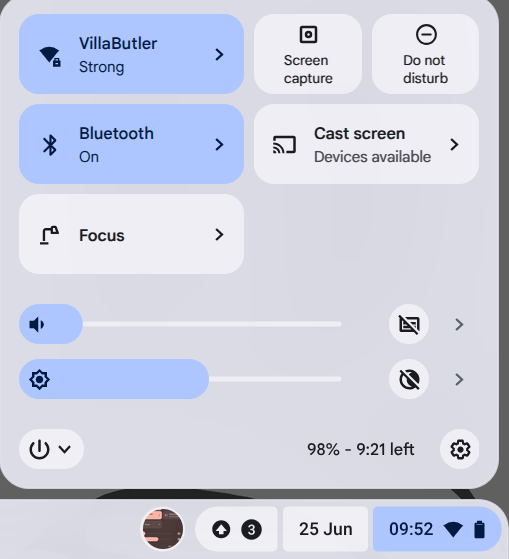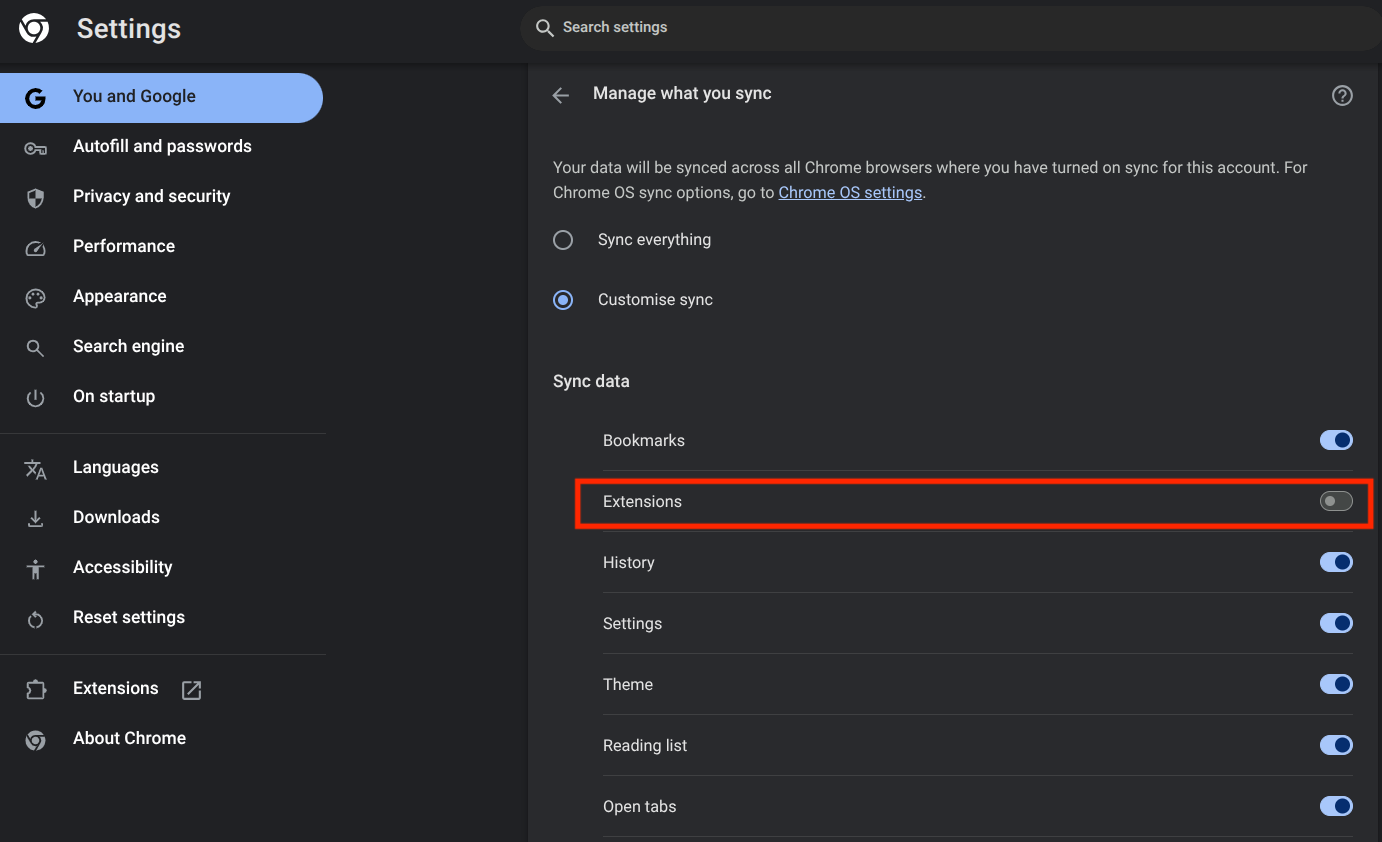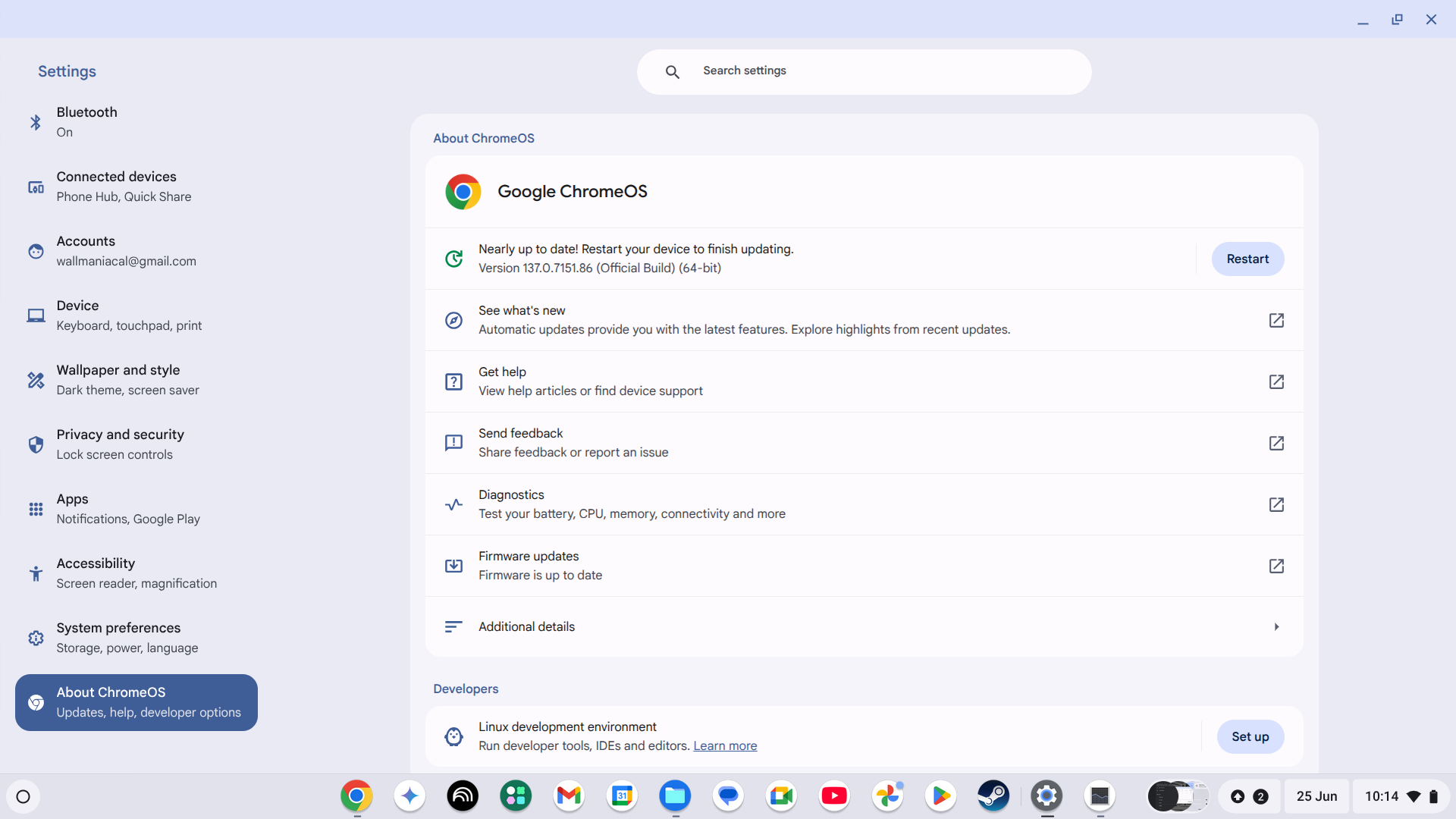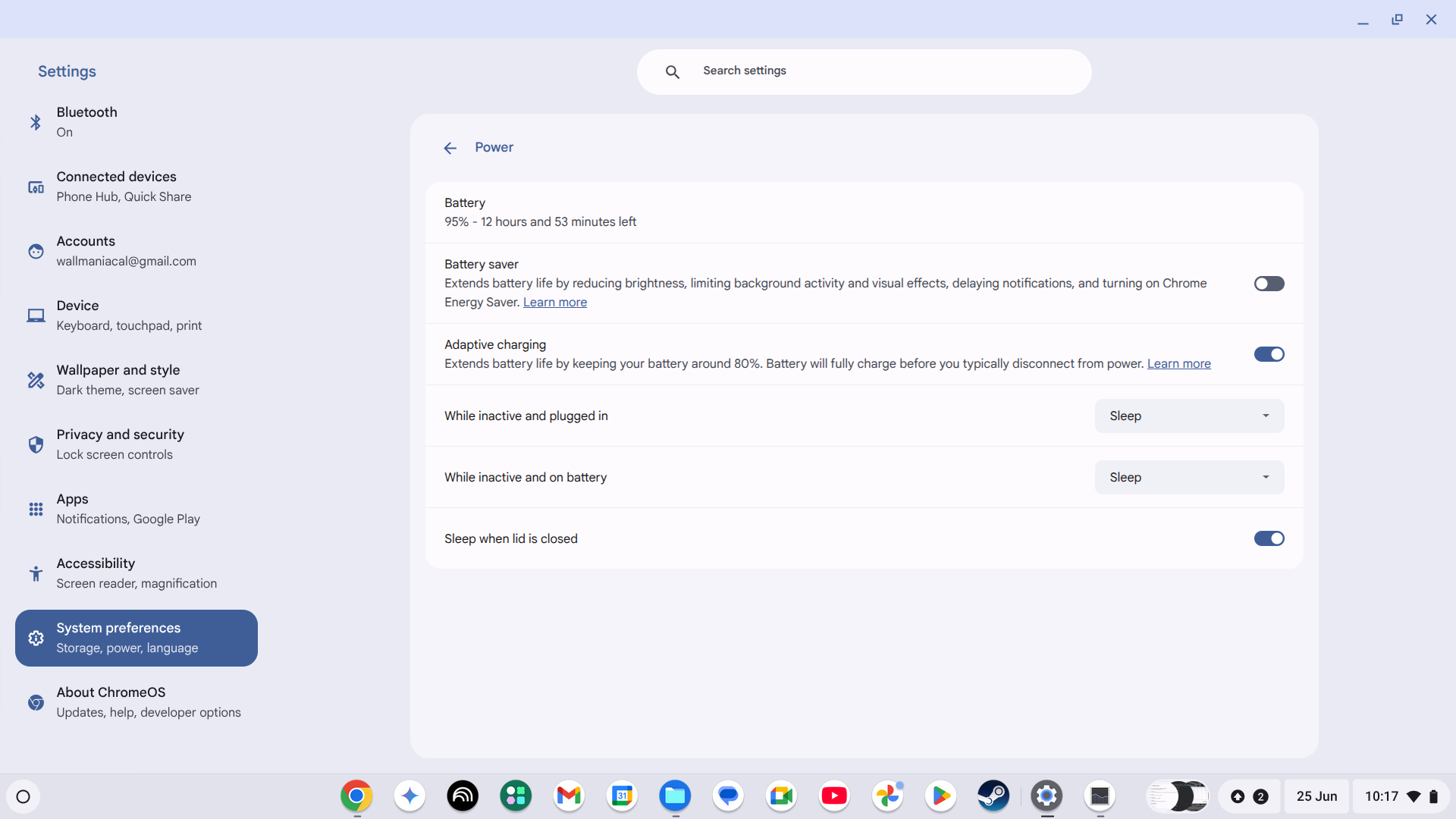Situatie
Solutie
Screen brightness is one of the main battery killers in any laptop, and Chromebooks are no different. If you’re running your Chromebook screen at maximum brightness, it’s going to put a serious dent in your battery life.
You can use the brightness shortcut keys on your Chromebook’s keyboard to dim the screen. Most people don’t need their screen to be very bright to work comfortably. If you’re setting the brightness to a high level because you’re outside or there’s too much ambient light, consider drawing the curtains or moving somewhere with less direct sunlight.
You can also adjust the brightness of your Chromebook’s screen by clicking on the system clock and then adjusting the brightness slider.
Like any computer, if you have too many things going on, your Chromebook needs to consume more power to get it all done. For example, if you have lots of tabs open and some of them are running processes in the background, that will spike your CPU usage. This is less of an issue on modern Chrome browsers, since it now suspends idle tabs to save battery and memory resources, but it can still contribute.
Of course, restarting your Chromebook will also close any applications that didn’t close properly. So if you haven’t done that in a while, it’s worth a shot.
Chrome extensions can be a powerful tool, but you should use them sparingly. Some extensions can run code in the background that can affect your battery life. Besides, extensions can be a privacy issue as well, so, in general, I recommend that you disable or remove any extensions that you don’t need.
Of course, if you are syncing your Chrome browser over multiple devices, you may have active extensions that you need on your Windows or macOS system, but not your Chromebook. The good news is that you can disable extensions on your Chromebook without removing them from your other computers. Just use the Advanced Sync settings by following this path:
Chrome menu > Settings > You and Google > Sync and Google services > Manage what you sync > Customize sync > Extensions. Then simply unchek the toggle for extensions.
It’s great that you can now run Android and Linux apps on Chromebooks and this makes them much more useful than they were before, but that can come with battery life drawbacks. Some apps, such as video games, need much more power to run. While your Chromebook may have no trouble doing web browsing and doing some light office work all day, load up a Steam game, and you’ll shave more than half that battery life away.
The only advice I can give is to make sure you close those apps when not using them, and be mindful of which apps you use while on battery power. Some apps don’t play nice with Chrome’s power management because they were designed for smartphones, but if you go to Settings > Apps > Manage Google Play Preferences, you can remove Google Play and Android apps, if you don’t want to deal with the hassle.
Poor Wi-Fi or Bluetooth Connection
Outdated Chrome OS or Apps
If you haven’t updated your Chromebook or its apps in a while, you should check that everything is up-to-date. It’s a long shot, but sometimes bugs in your software can lead to higher power drains. Most of the time, your Chromebook would’ve updated automatically, but just in case it didn’t, it takes just a few seconds to get to Settings > About ChromeOS > Check for updates.
If there are updates pending, complete them and remember to reboot your Chromebook so that everything takes effect properly.
ChromeOS doesn’t give you fine-grained control over power settings the way that Windows, macOS, or Linux does, but you do have some measure of control. If you go to Settings > System preferences > Power, you can change things like when the laptop sleeps. The most useful feature here is “Battery Saver” which is a mode that turns on all the battery saving tweaks you’d have to do manually in the past.
Battery saver will reduce brightness, cut background activity, and make several other changes that will reduce the laptop’s battery drain. This usually only kicks in when you’re low on battery power, but you can activate it any time manually.
If nothing seems to work and your Chromebook is definitely losing battery power faster than before, then the last software-based trick you can try is a factory reset. If you go to Settings > System Preferences > Powerwash and activate it to wipe the Chromebook clean.






Leave A Comment?